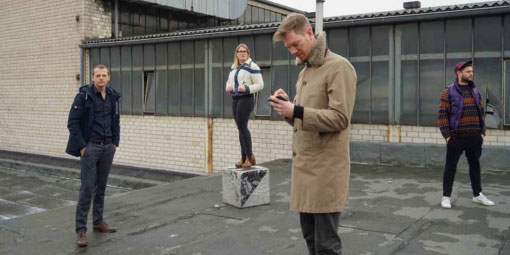
In most contexts, images are mediating definite information about the depticted objects and are thus conveying knowledge and understanding to the viewer. This function of an image is often equalled with a congruency of image and reality which does, however, not actually exist. Images are always shaping the insights they are depicting in a constructive manner as well, they appear in the style of the time and leave space for interpretation. This ambiguity of the image opens up space for artistic processes and the curious investigation of image-instrinsic patterns.
Artists are approaching the world that surrounds them as well as its representation mechanisms by various means. In this process, the curious and observing view does not only show in formal aspects but essentially in the interweavement with content-wise and historical relations which are opening up a complex world of knowledge.
The exhibition "Ohne Netz und doppelten Boden" gathers works and groups of works by different artists who are negotiating this very construction of reality through images and their representations. They take into account that the visualization of causal relationships and thus the creation of meaning is not achieved by the image alone, but also by the way it is presented.
The exhibition shows arrangements of images and objects which are situated at the interface between reality and fiction, which are stating realities while appearing illusionistic and autonomous as artistic construction. The ambiguity of the works allows for the equal co-existence of numerous possibilities. In this process no reality has to be given up in favour of another one – the possibility of multiple realities in terms of relativism is translated into a visual vocabulary.


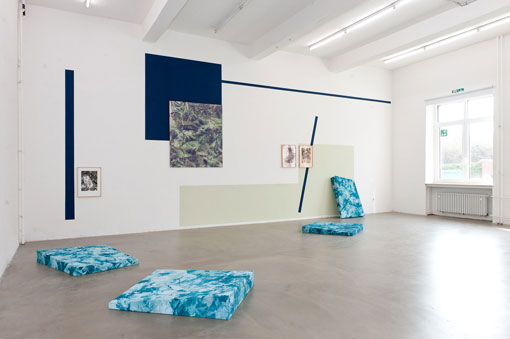
In his works Sebastian Bartel addresses the constitutive aspects and intrinsic characteristics of the image. He broaches the issue of the production, the presentation and the reception of images by investigating their manifestions, dependences and interrelations. In his latest work, the artist uses image footage from scientific contexts. (Bianca Strauß)
www.sebastianbartel.com
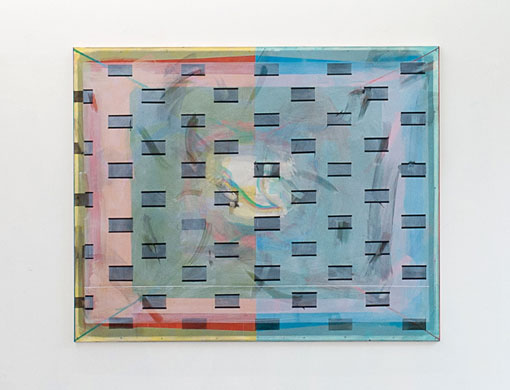
Situated between informal and geometric abstration, Christof John's paintings are fathoming the aspects of non-verbal spaces of thoughts and moods. Everyday observations serve as the starting points and impulse for his work. The compostions are characterized by an opaque to semi-transparent application of paint and create a contemplative concentration
christofjohn.de
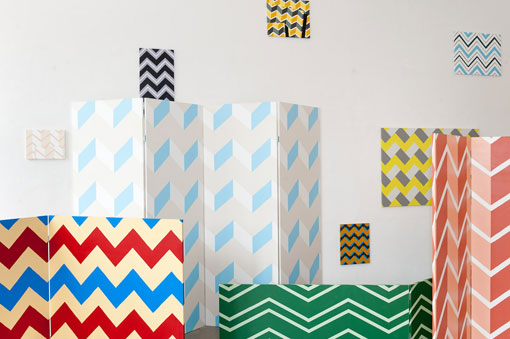
"(...) The works by Katharina Maderthaner, be they two- or three-dimensional, are evolving in a two-stroke logic: first synthesize, then sublimate. Shapes, textures, patterns and surfaces the artist finds in the environment surrounding her are first reduced, compressed and boiled down to the marrow. Hardware stores, allot settlements, self-made web pages and amateurishly designed flyers are among her sources of inspiration.
In a second phase, this visual embellishment is enriched by elements of minimalist sculpture and abstract graphics – or rather codes of codes of minimalism – and is thus undergoing another alienation. Beyond all deconstructionist expectations or postmodern attitudes, Maderthaner's works present themselves in a serious and autonomous manner and with an irritating matter of course. (...)" (Dr. Emmanuel Mir, 2014, excerpt from the text „Aus dem Strom“)
www.katharinamaderthaner.com
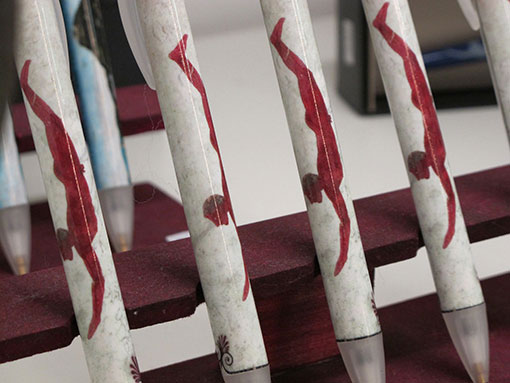
From the conversation between the artist Christoph Westermeier and the critique Christina Irrgang for the magazine „Kuba Paris“, second edition, 2015:
CW: Postcards, like art books are the most obvious handling of our cultural heritage, of our own history – and its distribution! I am excited by the history of the reproduction of artworks. Ever since the production of etchings reproduction allows for a certain freedom of interpretation. What is more interesting: the original or the reproduction? The sculpture or the casting? I am thinking of Winkelmann and the consideration that in the casting of a sculpture, or in an extended sense in the reproduction of an image, the pure idea manifests itself (beyond history). Today, instead of one photograph, we have hundreds of different views of, say a sculpture which almost allow for an all-round view. On one hand we have read in Walter Benjamin's work that the aura is changing with the reproducibility. But is it really destroyed, or is it as a matter of fact even stronger than before? Why is there suddenly the urge of seeing the Mona Lisa "live" at the Louvre, in a time where everybody knows what she looks like anyway, where she is omnipresent and her face is advertising for Lotto Toto? Key images causing such an urge turn up time and again. Is this due to the digital image overflow that we feel the urge to see something original?
CI: It is a form of realization, to step beyond the artificial world of the image, if not to drop-out altogether – to get back with our own perceptive survey. The omnipresence of a motif creates a pseudo-plasticity, which in turn causes the wish for the real plasticity. A wish for a body instead of a mere projection.
CW:
But isn't the access to the image modified as well? I think by being exposed to an overflow of images at the computer, we get a stronger relation to the original.
CI: ...also to re-enable ourselves to take up a position. A gesture against the virtual.
www.christophwestermeier.de